 Domestic violence can come in many forms and can happen to anyone. It is found all across the world and has a long-standing history in nearly every society. Domestic violence can present itself in many different ways, including sexual violence, physical violence, and emotional violence. In this 3-page fact sheet, we break down each of these types of abuse further to better understand what they really mean. Written by Kathleen Beall and Heidi Radunovich, and published by the UF Department of Family Youth and Community Sciences, December 2014. (Photo: iStock/Thinkstock.com)
Domestic violence can come in many forms and can happen to anyone. It is found all across the world and has a long-standing history in nearly every society. Domestic violence can present itself in many different ways, including sexual violence, physical violence, and emotional violence. In this 3-page fact sheet, we break down each of these types of abuse further to better understand what they really mean. Written by Kathleen Beall and Heidi Radunovich, and published by the UF Department of Family Youth and Community Sciences, December 2014. (Photo: iStock/Thinkstock.com)
http://edis.ifas.ufl.edu/fy1453
Tag: Family Youth and Community Sciences Department
Seguridad Alimentaria: ¿Su cocina pasa la prueba?
 Los adultos mayores corren un riesgo mayor de contraer enfermedades por alimentos. Para ayudar a reducir el riesgo, es importante tener prácticas de manipulación de alimentos sanas. ¿Cómo se mide su cocina?
Los adultos mayores corren un riesgo mayor de contraer enfermedades por alimentos. Para ayudar a reducir el riesgo, es importante tener prácticas de manipulación de alimentos sanas. ¿Cómo se mide su cocina?
This 2-page fact sheet is the Spanish language version of Food Safety: Does Your Kitchen Pass the Test?, written by Jennifer Hillan and Linda B. Bobroff, and published by the UF Department of Family Youth and Community Sciences, December 2014.
http://edis.ifas.ufl.edu/fy1163
Filing a Restraining Order in Florida
 After a charge or arrest for domestic violence, the abuser may still find ways to cause harm. One of the most common threats faced after ending a violent relationship is stalking. Stalking is when someone repeatedly follows, harasses, or makes threats against you. Fortunately, there are laws and legal protections that can work to keep you safe if you are stalked. The first and often most powerful of these protections is filing an injunction. In this 3-page fact sheet, Kathleen Beall and Heidi Radunovich explore what an injunction is, how it is filed, and what it protects you against. Published by the UF Department of Family Youth and Community Sciences, December 2014. Photo: (iStock/Thinkstock.com)
After a charge or arrest for domestic violence, the abuser may still find ways to cause harm. One of the most common threats faced after ending a violent relationship is stalking. Stalking is when someone repeatedly follows, harasses, or makes threats against you. Fortunately, there are laws and legal protections that can work to keep you safe if you are stalked. The first and often most powerful of these protections is filing an injunction. In this 3-page fact sheet, Kathleen Beall and Heidi Radunovich explore what an injunction is, how it is filed, and what it protects you against. Published by the UF Department of Family Youth and Community Sciences, December 2014. Photo: (iStock/Thinkstock.com)
http://edis.ifas.ufl.edu/fy1455
Facts about Farm to School
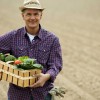 Farm to school is a nationwide program that improves the supply of fresh, local produce to schools by building relationships between local farmers and schools. Over the past 20 years, school districts in all 50 states have joined the F2S program and are purchasing items from local farmers. Recent requirements for more fruit and vegetables in the National School Lunch Programs have made the F2S program more popular than ever. The University of Florida is committed to the Farm to School program and is working closely with the Florida Department of Agriculture and Consumer Services to connect farmers to schools. This 3-page fact sheet was written by Samantha Ward, Lauren Headrick, and Karla Shelnutt, and published by the UF Department of Family Youth and Community Sciences, December 2014. (Photo: iStock/Thinkstock.com)
Farm to school is a nationwide program that improves the supply of fresh, local produce to schools by building relationships between local farmers and schools. Over the past 20 years, school districts in all 50 states have joined the F2S program and are purchasing items from local farmers. Recent requirements for more fruit and vegetables in the National School Lunch Programs have made the F2S program more popular than ever. The University of Florida is committed to the Farm to School program and is working closely with the Florida Department of Agriculture and Consumer Services to connect farmers to schools. This 3-page fact sheet was written by Samantha Ward, Lauren Headrick, and Karla Shelnutt, and published by the UF Department of Family Youth and Community Sciences, December 2014. (Photo: iStock/Thinkstock.com)
http://edis.ifas.ufl.edu/fy1450
Breast Cancer: Making Sense of the Numbers
 A breast cancer diagnosis is always a challenge to the patient and her family.* People react in different ways to a breast cancer diagnosis. Some breast cancer patients want to take an active role in understanding and choosing their treatment, and others prefer to leave decisions to their health care providers. This 5-page fact sheet, first in a 12-part series on breast cancer, provides information that will help persons who want to understand and be actively involved in treatment decisions. Was written by Martha C. Monroe, Barbara F. Shea, and Linda Bobroff, and published by the UF Department of Family Youth and Community Sciences, December 2014. (Photo: iStock/Thinkstock)
A breast cancer diagnosis is always a challenge to the patient and her family.* People react in different ways to a breast cancer diagnosis. Some breast cancer patients want to take an active role in understanding and choosing their treatment, and others prefer to leave decisions to their health care providers. This 5-page fact sheet, first in a 12-part series on breast cancer, provides information that will help persons who want to understand and be actively involved in treatment decisions. Was written by Martha C. Monroe, Barbara F. Shea, and Linda Bobroff, and published by the UF Department of Family Youth and Community Sciences, December 2014. (Photo: iStock/Thinkstock)
http://edis.ifas.ufl.edu/fy895
Spousal Individual Retirement Accounts
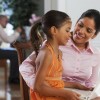 A spouse who stays at home to take care of children or other dependents is likely to have reduced Social Security benefits and will not have access to a workplace retirement plan. So a spousal Individual Retirement Account (IRA) can be an important step to enabling retirement security. An IRA is a tax-advantaged way to accumulate money for retirement. In order to contribute to an IRA you must have taxable compensation. But if your spouse has taxable compensation and you file a joint return, then you can fund an IRA. This 2-page fact sheet was written by Lisa Leslie, and published by the UF Department of Family Youth and Community Sciences, November 2014.
A spouse who stays at home to take care of children or other dependents is likely to have reduced Social Security benefits and will not have access to a workplace retirement plan. So a spousal Individual Retirement Account (IRA) can be an important step to enabling retirement security. An IRA is a tax-advantaged way to accumulate money for retirement. In order to contribute to an IRA you must have taxable compensation. But if your spouse has taxable compensation and you file a joint return, then you can fund an IRA. This 2-page fact sheet was written by Lisa Leslie, and published by the UF Department of Family Youth and Community Sciences, November 2014.
http://edis.ifas.ufl.edu/fy1456
The Risks of Obesity, Weight Control Behaviors, and Disordered Eating on (to) Adolescents
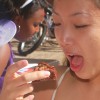 Over the past 15 years, unhealthy weight-loss behaviors among U.S. adolescents are becoming more widespread. This 5-page fact sheet addresses the consequences and risks associated with risky weight-control practices and discusses the prevalence of eating disorders and the role of body image in weight practices. The publication also provides references that can be used to help practitioners educate youth on the importance of setting realistic goals and enhancing body satisfaction. Written by Emily Johnson and Kate Fogarty, and published by the UF Department of Family Youth and Community Sciences, September 2014. (AP Photo/University of Florida/IFAS/Josh Wickham)
Over the past 15 years, unhealthy weight-loss behaviors among U.S. adolescents are becoming more widespread. This 5-page fact sheet addresses the consequences and risks associated with risky weight-control practices and discusses the prevalence of eating disorders and the role of body image in weight practices. The publication also provides references that can be used to help practitioners educate youth on the importance of setting realistic goals and enhancing body satisfaction. Written by Emily Johnson and Kate Fogarty, and published by the UF Department of Family Youth and Community Sciences, September 2014. (AP Photo/University of Florida/IFAS/Josh Wickham)
http://edis.ifas.ufl.edu/fy1452
Healthy Living for Elders: Use Your Medicines Safely!
 Medicines can help us feel better and improve our health, but if we do not use them correctly, they can make us feel worse or even cause major health problems. To use your medicines safely, keep the following tips in mind. This 4-page large print fact sheet was written by Paulina Wittkowsky, Linda B. Bobroff, and Emily Minton, and published by the UF Department of Family Youth and Community Sciences, November 2014. (Photo: Thinkstock.com)
Medicines can help us feel better and improve our health, but if we do not use them correctly, they can make us feel worse or even cause major health problems. To use your medicines safely, keep the following tips in mind. This 4-page large print fact sheet was written by Paulina Wittkowsky, Linda B. Bobroff, and Emily Minton, and published by the UF Department of Family Youth and Community Sciences, November 2014. (Photo: Thinkstock.com)
http://edis.ifas.ufl.edu/fy667
The Impact of Fathers on Children's Well-Being
 American families have changed dramatically over the last century. Currently, about half the children in the United States will live apart from their fathers some time during their childhood because their parents have separated and the proportion of births to unmarried women has risen from 5 percent in 1960 to 41 percent in 2011. But a father who is absent from the household may not necessarily be absent from his child’s life. This 5-page fact sheet provides a brief summary of the history of fatherhood in America and discusses the importance of involved fathers, and how mothers, other family members, and adult role models can make a positive impact in a child’s life. Written by Sarah M. Ellis, Yasmin S. Khan, Victor W. Harris, Ricki McWilliams, and Diana Converse, and published by the UF Department of Family Youth and Community Sciences, October 2014.
American families have changed dramatically over the last century. Currently, about half the children in the United States will live apart from their fathers some time during their childhood because their parents have separated and the proportion of births to unmarried women has risen from 5 percent in 1960 to 41 percent in 2011. But a father who is absent from the household may not necessarily be absent from his child’s life. This 5-page fact sheet provides a brief summary of the history of fatherhood in America and discusses the importance of involved fathers, and how mothers, other family members, and adult role models can make a positive impact in a child’s life. Written by Sarah M. Ellis, Yasmin S. Khan, Victor W. Harris, Ricki McWilliams, and Diana Converse, and published by the UF Department of Family Youth and Community Sciences, October 2014.
http://edis.ifas.ufl.edu/fy1451
Homemade Household Cleaners
 Are you on a budget? Running low on those household cleaners? Instead of heading to the store to buy those more expensive cleaners, make your own! Many homemade household cleaners can be made with just a few inexpensive products that will last a lot longer. This 3-page fact sheet was written by Amanda Griffin and Randall A. Cantrell, and published by the UF Department of Family Youth and Community Sciences, October 2014. (Photo: iStock/Thinkstock.com)
Are you on a budget? Running low on those household cleaners? Instead of heading to the store to buy those more expensive cleaners, make your own! Many homemade household cleaners can be made with just a few inexpensive products that will last a lot longer. This 3-page fact sheet was written by Amanda Griffin and Randall A. Cantrell, and published by the UF Department of Family Youth and Community Sciences, October 2014. (Photo: iStock/Thinkstock.com)
http://edis.ifas.ufl.edu/fy1449
Facts about Potassium
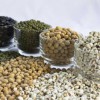 Potassium is a mineral found inside body cells. It is one of several minerals known as electrolytes. It is important because it helps regulate fluid and electrolyte balance, maintain normal blood pressure, transmit nerve impulses, control muscle contraction, and maintain healthy bones. Legumes are good sources of potassium, as are nuts and seeds. This 2-page fact sheet was written by R. Elaine Turner and Linda B. Bobroff, and published by the UF Department of Family Youth and Community Sciences, September 2014. (Photo: tofumax/iStock/Thinkstock.com)
Potassium is a mineral found inside body cells. It is one of several minerals known as electrolytes. It is important because it helps regulate fluid and electrolyte balance, maintain normal blood pressure, transmit nerve impulses, control muscle contraction, and maintain healthy bones. Legumes are good sources of potassium, as are nuts and seeds. This 2-page fact sheet was written by R. Elaine Turner and Linda B. Bobroff, and published by the UF Department of Family Youth and Community Sciences, September 2014. (Photo: tofumax/iStock/Thinkstock.com)
http://edis.ifas.ufl.edu/fy889
Closing Your Seasonal Home
 Get organized and make a plan before you lock your doors to leave your home for an extended period of time. Proper preparation inside and out will help ensure your return to a clean, undamaged home. Florida’s environment creates the possibility for mildew growth, storm damage, and pests. Unoccupied homes are more susceptible to these types of damage. This 6-page fact sheet provides the necessary steps to prepare your home before leaving for an extended period of time. There is also a checklist to help you remember. Written by Julie England, Audrey Norman, Randall A. Cantrell, and Maria J. Portelos-Rometo, and published by the UF Department of Family Youth and Community Sciences, June 2014.
Get organized and make a plan before you lock your doors to leave your home for an extended period of time. Proper preparation inside and out will help ensure your return to a clean, undamaged home. Florida’s environment creates the possibility for mildew growth, storm damage, and pests. Unoccupied homes are more susceptible to these types of damage. This 6-page fact sheet provides the necessary steps to prepare your home before leaving for an extended period of time. There is also a checklist to help you remember. Written by Julie England, Audrey Norman, Randall A. Cantrell, and Maria J. Portelos-Rometo, and published by the UF Department of Family Youth and Community Sciences, June 2014.
http://edis.ifas.ufl.edu/he887
Elder Nutrition
 Good nutrition is important throughout life, starting even before we are born. However, at certain stages in life, such as infancy, pregnancy, and in older age, the importance of having good eating habits is especially critical. This 8-page fact sheet focuses on how aging affects nutrition and diet and choices that older adults can make to improve or maintain their health and well-being as they age.was written by Linda B. Bobroff and Martie Gillen, and published by the UF Department of Family Youth and Community Sciences, April 2014.
Good nutrition is important throughout life, starting even before we are born. However, at certain stages in life, such as infancy, pregnancy, and in older age, the importance of having good eating habits is especially critical. This 8-page fact sheet focuses on how aging affects nutrition and diet and choices that older adults can make to improve or maintain their health and well-being as they age.was written by Linda B. Bobroff and Martie Gillen, and published by the UF Department of Family Youth and Community Sciences, April 2014.
http://edis.ifas.ufl.edu/fy628
Hydration Myths
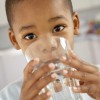 Whether at school, work, or running errands, it is common to see people sipping on their water bottles. This fashionable trend is a healthy one because water is essential for life. But while most people know that drinking water is good for them, many misconceptions exist about water and hydration. Learn the truth behind some of the most common hydration myths. This 4-page fact sheet was written by Lauren Caruso, Karla P. Shelnutt, and Gail Kauwell, and published by the UF Department of Family Youth and Community Sciences, August 2014.
Whether at school, work, or running errands, it is common to see people sipping on their water bottles. This fashionable trend is a healthy one because water is essential for life. But while most people know that drinking water is good for them, many misconceptions exist about water and hydration. Learn the truth behind some of the most common hydration myths. This 4-page fact sheet was written by Lauren Caruso, Karla P. Shelnutt, and Gail Kauwell, and published by the UF Department of Family Youth and Community Sciences, August 2014.
http://edis.ifas.ufl.edu/fy1409
Bullying Related to Lack of Time with Dad
 It’s a bad feeling for any parent: the sinking realization that your child has been teasing or even harming other children. No one wants to be the parent of a bully. Yet many are, given that more than a third of children in grades K through 8 report being bullied. This 2-page Family Album Radio transcript was written by Carol Church, and published by the UF Department of Family Youth and Community Sciences, August 2014.
It’s a bad feeling for any parent: the sinking realization that your child has been teasing or even harming other children. No one wants to be the parent of a bully. Yet many are, given that more than a third of children in grades K through 8 report being bullied. This 2-page Family Album Radio transcript was written by Carol Church, and published by the UF Department of Family Youth and Community Sciences, August 2014.
http://edis.ifas.ufl.edu/fm1143
Keeping it Clean: Plan Your Cleaning
 This 1-page fact sheet lists the things you should clean as you go, those tasks you should do immediately, and tasks to do less often. Written by Mary N. Harrison, Amanda Griffin, and Randall A. Cantrell, and published by the UF Department of Family Youth and Community Sciences, May 2014.
This 1-page fact sheet lists the things you should clean as you go, those tasks you should do immediately, and tasks to do less often. Written by Mary N. Harrison, Amanda Griffin, and Randall A. Cantrell, and published by the UF Department of Family Youth and Community Sciences, May 2014.
http://edis.ifas.ufl.edu/fy787
Keeping It Clean: A Healthy House
 The way you clean and maintain your home will affect the health of your family, especially children. The incidence of children diagnosed with asthma is increasing. You can help make your home safe and healthy for your children by eliminating or controlling the risks outlined in this publication. This 2-page fact sheet was written by Mary N. Harrison, Amanda Griffin, and Randall A. Cantrell, and published by the UF Department of Family Youth and Community Sciences, May 2014.
The way you clean and maintain your home will affect the health of your family, especially children. The incidence of children diagnosed with asthma is increasing. You can help make your home safe and healthy for your children by eliminating or controlling the risks outlined in this publication. This 2-page fact sheet was written by Mary N. Harrison, Amanda Griffin, and Randall A. Cantrell, and published by the UF Department of Family Youth and Community Sciences, May 2014.
http://edis.ifas.ufl.edu/fy786
Keeping it Clean: Controlling Mildew
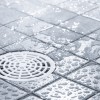 Mildew is a mold that can grow and cause damage to your health and home. The concern about mildew is that it is believed to contribute to respiratory problems, like asthma, especially in children. This 1-page fact sheet provides tips for preventing mildew and for getting rid of it. Written by Mary N. Harrison, Randall A. Cantrell, and Amanda Griffin, and published by the UF Department of Family Youth and Community Sciences, May 2014.
Mildew is a mold that can grow and cause damage to your health and home. The concern about mildew is that it is believed to contribute to respiratory problems, like asthma, especially in children. This 1-page fact sheet provides tips for preventing mildew and for getting rid of it. Written by Mary N. Harrison, Randall A. Cantrell, and Amanda Griffin, and published by the UF Department of Family Youth and Community Sciences, May 2014.
http://edis.ifas.ufl.edu/fy796
Understanding the Changes to the Patient’s Bill of Rights as a Result of the Affordable Care Act
 The Affordable Care Act is a legislative act that has provided individuals and families more choices related to healthcare insurances. It offers consumers new protections and benefits by creating a more defined Patient’s Bill of Rights. This 2-page fact sheet was written by Deanna Andrews and Martie Gillen, and published by the UF Department of Family Youth and Community Sciences, May 2014.
The Affordable Care Act is a legislative act that has provided individuals and families more choices related to healthcare insurances. It offers consumers new protections and benefits by creating a more defined Patient’s Bill of Rights. This 2-page fact sheet was written by Deanna Andrews and Martie Gillen, and published by the UF Department of Family Youth and Community Sciences, May 2014.
http://edis.ifas.ufl.edu/fy1410
Facts about Quinoa
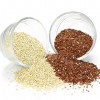 The U.S. Department of Agriculture’s MyPlate nutrition guide recommends that Americans consume half of their grains from whole grain foods. Whole wheat bread and oatmeal are whole grain foods that are familiar to most Americans, but lots of other whole grain foods are also available. An example of an unfamiliar whole grain food is quinoa (pronounced keen-wa). Quinoa is a nutritious seed that is simple to prepare. It can be served as a hot cereal or side dish, as a cold salad similar to pasta salad, or it can be used in recipes in place of rice or other grains. It also has the advantage of being gluten free, which is a must for people diagnosed with celiac disease. Follow the link to learn more about quinoa and what it has to offer. This 3-page fact sheet was written by Alexandra Dati, Gail Kauwell, and Amy Simonne, and published by the UF Department of Family Youth and Community Sciences, May 2014.
The U.S. Department of Agriculture’s MyPlate nutrition guide recommends that Americans consume half of their grains from whole grain foods. Whole wheat bread and oatmeal are whole grain foods that are familiar to most Americans, but lots of other whole grain foods are also available. An example of an unfamiliar whole grain food is quinoa (pronounced keen-wa). Quinoa is a nutritious seed that is simple to prepare. It can be served as a hot cereal or side dish, as a cold salad similar to pasta salad, or it can be used in recipes in place of rice or other grains. It also has the advantage of being gluten free, which is a must for people diagnosed with celiac disease. Follow the link to learn more about quinoa and what it has to offer. This 3-page fact sheet was written by Alexandra Dati, Gail Kauwell, and Amy Simonne, and published by the UF Department of Family Youth and Community Sciences, May 2014.
http://edis.ifas.ufl.edu/fy1408